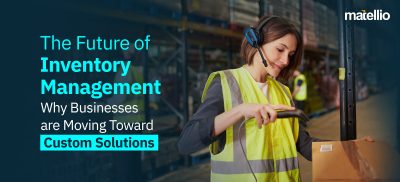
The mortgage industry has consistently faced hurdles like excessive paperwork, prolonged approval periods, and vulnerability to human errors. As customer expectations shift toward faster, more dependable services, lenders are under mounting pressure to optimize their processes. Mortgage process automation presents a transformative solution, minimizing manual workloads, increasing accuracy, and enhancing the borrower’s experience. By adopting automation, mortgage providers can remain competitive in an environment that prioritizes efficiency and precision.
What is Mortgage Process Automation?
Mortgage process automation involves using technology to streamline repetitive tasks in the mortgage lifecycle, including loan origination, underwriting, compliance, and loan servicing. Key technologies include Robotic Process Automation (RPA), which automates manual data entry and other rule-based tasks, and AI for advanced data analysis and decision-making. Document management systems and intelligent OCR (Optical Character Recognition) tools are also used to automate document handling, ensuring data accuracy and compliance throughout the process.
Why Businesses Need to Automate the Mortgage Process
In today’s competitive lending environment, mortgage process automation has become crucial for businesses looking to deliver efficient, accurate, and customer-focused services. Automating the mortgage process enables lenders to streamline operations and improve customer satisfaction. Here’s a closer look at why mortgage automation is essential for modern providers:
 Reduced Processing Times
Reduced Processing Times
Automation expedites the mortgage journey by digitizing critical steps like data entry and approval. By leveraging mortgage process automation solutions, lenders reduce delays and move loans to closure faster, offering a competitive edge in the lending market.
 Enhanced Accuracy
Enhanced Accuracy
Manual data entry often leads to errors, which can increase compliance risks. By integrating robotic process automation in mortgage processes, lenders achieve greater accuracy by automating data handling, ensuring information is reliable and consistent. This minimizes compliance risks and maintains data integrity throughout the mortgage lifecycle.
 Cost Savings
Cost Savings
Automating repetitive processes such as documentation verification and application processing allows lenders to cut down on manual labor costs. Through automated mortgage processing, companies can streamline resource allocation and reduce operational expenses, freeing up funds for strategic investments.
 Improved Compliance
Improved Compliance
In the heavily regulated mortgage industry, compliance with standards is essential. Mortgage process automation services offer built-in compliance checks at each stage of the process, helping businesses adhere to regulations seamlessly. By automating documentation and audit trails, lenders mitigate legal risks and simplify audits.
 Better Customer Experience
Better Customer Experience
Customers expect fast, accurate service. With automated mortgage processing, lenders can provide faster approvals, clearer processes, and reduced errors, leading to a more positive borrower experience. This efficiency builds trust, enhances customer loyalty, and sets lenders apart from competitors.
 Increased Productivity
Increased Productivity
By eliminating time-intensive administrative tasks, automation enables employees to focus on strategic activities. Mortgage banking business process automation allows lenders to streamline their workflows and improve productivity, driving better business outcomes and enhancing operational agility.
 Data-Driven Insights
Data-Driven Insights
Through advanced digital transformation services like AI and data analytics, mortgage automation tools offer real-time insights into borrower behavior, loan performance, and operational efficiencies. These insights empower lenders to make data-backed decisions, optimize processes, and anticipate market shifts, positioning them for long-term growth.
Looking to Reduce Errors and Improve Speed with Mortgage Automation? Creating an effective automated mortgage solution requires a combination of core and advanced features. Here’s a breakdown: This combination of core and next-gen features ensures a robust and efficient mortgage solution, tailored to the modern needs of the industry. Automating the mortgage process offers significant improvements across various stages, transforming traditional workflows into efficient, customer-centric operations. Here’s a closer look at how automation applies across key areas: Automation in mortgage process automation streamlines the initial application stage, handling everything from data collection to document verification. Automated systems gather borrower information swiftly, verify credentials, and accelerate pre-approval, allowing lenders to onboard clients with minimal delays. In underwriting, robotic process automation in mortgage (RPA) leverages advanced analytics and predictive models to assess borrower risk based on factors like credit history, income, and debt-to-income ratios. RPA enables lenders to make data-driven underwriting decisions more accurately and quickly, reducing reliance on manual checks and minimizing human errors. With automated mortgage processing, compliance checks are integrated throughout the loan lifecycle, ensuring that borrower data aligns with industry regulations at every step. Automated systems verify data for accuracy, regulatory adherence, and audit readiness, significantly lowering the risk of compliance-related errors and simplifying regulatory audits. Efficient document management is essential for seamless mortgage processing. Mortgage process automation solutions provide intelligent document handling by categorizing, validating, and securely storing documents. This automation eliminates manual filing errors, improves document accessibility, and enhances data security, making it easier for lenders to retrieve and review important files as needed. Mortgage robotic process automation enhances customer communication by automating updates on application status, pending documentation, and other essential steps in the process. Real-time notifications and personalized messages keep borrowers informed, enhancing their experience and increasing engagement by making the mortgage process more transparent and interactive. Once a loan is disbursed, automation in mortgage banking business process simplifies post-loan management activities such as payment processing, due date reminders, and loan tracking. This automation ensures timely updates and payment reminders to borrowers, reducing defaults and improving loan performance over time. Read More: Discover how cloud lending solutions development can revolutionize your financial services by streamlining loan processes, enhancing efficiency, and ensuring compliance in today’s digital landscape. Automation systems in mortgage processing offer valuable insights by analyzing real-time data from various stages of the loan process. With RPA development services, lenders can gain visibility into trends, customer preferences, and processing bottlenecks, allowing for continuous improvement of workflows and better decision-making. Transform Your Mortgage Operations with Advanced Automation Solutions! Implementing mortgage process automation involves a structured approach to streamline workflows, enhance accuracy, and ensure compliance. Here’s a step-by-step guide with insights on how our experts support each phase: Analyze the mortgage process to identify repetitive tasks, such as document verification and data entry, that are prone to delays and errors. This prioritization helps target areas where automation will drive the most value. Our experts assess your current workflow to identify high-impact areas where automation can enhance efficiency and accuracy. Choosing suitable tools, whether for automated mortgage processing or AI-powered analytics, is essential for seamless mortgage automation. The right tools will align with scalability needs and integrate smoothly with existing systems. We recommend automation tools based on your specific goals, ensuring compatibility with your business infrastructure for a smooth integration process. Pilot tests are essential to evaluate system functionality in real-world conditions and refine workflows as needed. This phase ensures that mortgage process automation solutions are fully optimized for actual usage. We conduct thorough pilot tests and assist with workflow adjustments to ensure seamless integration and reliable automation. Training your team is crucial for smooth adoption. Training sessions introduce employees to the tools, supporting effective usage and fostering a positive transition to mortgage banking business process automation. We offer tailored training programs to guide your team on best practices and optimize tool usage, promoting higher adoption rates and operational efficiency. Continuous monitoring ensures the system functions at peak performance. By gathering feedback, businesses can make adjustments that align automation with evolving needs, such as those driven by mortgage robotic process automation. Our team provides ongoing support to monitor, analyze, and optimize your system, ensuring that it consistently meets business objectives. Read More: For an in-depth look at custom solutions tailored to streamline mortgage processes, check out our comprehensive guide on Custom Mortgage Software Development. Implementing mortgage process automation comes with its share of challenges despite the clear advantages it brings. Addressing these obstacles proactively is essential to ensure a smooth transition and sustainable success. Here’s a deeper look into each challenge and the solutions that can help overcome them: Challenge: The mortgage industry handles large amounts of sensitive information, including personal, financial, and identification data. Ensuring the security and privacy of this data in an automated environment is paramount, as any breach could lead to significant legal and reputational damage. Solution: Implementing robust encryption protocols and multi-layered access control mechanisms is crucial. Continuous monitoring tools should be in place to detect unusual activities and mitigate potential threats in real-time. Additionally, by partnering with Cloud Integration Services experts, businesses can ensure that security features are built into the automation framework from the ground up, adhering to industry standards and best practices. Challenge: Legacy systems are often not equipped to handle new automated tools, making integration challenging. Compatibility issues can disrupt data flow and lead to inefficiencies in the mortgage process. Solution: Skilled integration specialists play a vital role in creating a seamless bridge between legacy systems and new automation tools. Leveraging mortgage process automation solutions that support a range of integration formats and APIs can also help streamline this transition, ensuring smooth, uninterrupted operations and data accessibility. Challenge: Automating mortgage processes often involve a significant upfront investment, from purchasing new software and hardware to retraining staff and updating workflows. Solution: Prioritizing automation in high-impact areas—such as loan origination and underwriting—allows companies to start realizing ROI more quickly. As automation proves effective in these critical areas, the system can be expanded across other processes over time, spreading out costs and maximizing return on investment. Partnering with experts who provide phased implementation can further optimize resource allocation for mortgage banking business process automation. Challenge: The mortgage sector is heavily regulated, with strict rules on data handling, reporting, and customer interactions. Any failure to comply with these regulations can result in legal consequences and penalties. Solution: Incorporating mortgage process automation services with built-in compliance features ensures that each stage of the automation process aligns with industry standards and regulatory requirements. Consulting regularly with compliance experts and embedding automated checks throughout the workflow can help maintain adherence to policies and quickly address changes in regulations. Challenge: Employees may fear that automation could make their jobs obsolete, or they may find it challenging to adapt to new technologies, leading to reluctance or resistance to use the new systems. Solution: Thorough training programs and clear communication about how automation reduces repetitive tasks can foster a positive attitude toward change. By explaining the strategic advantages of automation—such as allowing employees to focus on higher-value tasks—organizations can encourage acceptance and engagement, leading to smoother adoption when implementing mortgage robotic process automation. Challenge: Automated systems rely on data to make informed decisions, but if the data is inaccurate, it can result in errors throughout the mortgage process. Ensuring data accuracy is critical for customer satisfaction and compliance. Solution: Conducting regular audits and implementing quality control checks within automated workflows help maintain high standards of data accuracy. By using automated mortgage processing tools that support error detection and validation, businesses can reduce discrepancies and maintain trustworthiness in their data handling. Challenge: Automated mortgage systems require regular updates and maintenance to stay aligned with evolving industry standards, security protocols, and business needs. Without ongoing maintenance, systems can become outdated, posing risks to both security and efficiency. Solution: Establishing a scheduled maintenance routine, along with partnering with robotic process automation specialists for ongoing support, helps ensure that systems are always up to date. Regular software updates and proactive troubleshooting enhance system reliability and keep automation running smoothly. Also Read: Unlock the power of Business Intelligence in Banking to drive data-driven decisions, optimize operations, and enhance customer experiences with actionable insights. The mortgage industry is rapidly adopting automation to improve efficiency and accuracy, and emerging technologies continue to refine and expand these capabilities. Here’s an in-depth look at the trends shaping the future of mortgage process automation: Artificial Intelligence (AI) is transforming decision-making processes in mortgage underwriting and risk assessment. By analyzing a wider array of data points beyond traditional metrics like credit scores, AI algorithms offer a more nuanced understanding of borrower risk. These advanced models enable lenders to make smarter, data-driven decisions while also reducing biases that can occur with human-led underwriting. Automated, AI-enhanced underwriting not only speeds up the approval process but also minimizes risks, supporting better portfolio health. With AI integration services, lenders gain access to these sophisticated algorithms, which are crucial for a competitive edge. Predictive analytics is becoming increasingly integral to automated mortgage processing. By assessing historical and real-time data on borrower behavior, predictive analytics tools can forecast loan performance, preemptively identifying risks like potential defaults. Predictive insights allow lenders to manage risks more effectively, adjusting terms, initiating early interventions, or offering tailored solutions to borrowers. This proactive risk management helps lenders maintain healthier loan portfolios and make more strategic, forward-looking decisions. Cloud technology is gaining traction in the mortgage industry as it offers scalable, flexible, and accessible automation solutions. Cloud-based mortgage process automation services enable real-time data synchronization, ensuring that all stakeholders have access to the latest information, which is crucial in a fast-paced mortgage environment. The cloud also supports remote work, allowing employees and borrowers to access necessary tools and data from anywhere. Additionally, cloud solutions can adapt to growing data volumes and operational needs, helping lenders scale efficiently without hefty infrastructure investments. Document processing is one of the most time-intensive aspects of automating mortgage processes, and it often involves a heavy paper trail. Advanced intelligent document processing (IDP) tools are evolving to handle document intake, validation, and classification in real time. By using machine learning and natural language processing, these tools can quickly verify document authenticity, check for errors, and flag missing information, drastically reducing processing times and human errors. This improvement leads to faster application reviews, streamlined compliance checks, and a more efficient borrower experience. Robotic Process Automation (RPA) is moving beyond simple, repetitive tasks to handle more complex mortgage processes like underwriting, fraud detection, and compliance checks. RPA’s ability to perform tasks with high precision ensures regulatory compliance and reduces the need for human intervention in detail-oriented areas. As automation technologies improve, mortgage robotic process automation is becoming a trusted resource for performing complex functions with consistency and accuracy, allowing mortgage professionals to focus on higher-level decision-making. With increasing volumes of sensitive borrower data being managed digitally, cybersecurity in mortgage process automation solutions is more critical than ever. Automation systems are adopting enhanced security protocols, including encryption, multi-factor authentication, and anomaly detection algorithms, to safeguard against data breaches and unauthorized access. These advanced security measures protect the integrity of financial data, ensuring lenders comply with data privacy regulations and maintain borrower trust. Modern mortgage banking business process automation tools are placing greater emphasis on improving the borrower experience. Customer-centric features, such as personalized notifications, self-service portals, and AI-driven support, allow borrowers to track their application status, upload documents, and receive real-time updates without human assistance. By making the process more transparent and responsive, automation enhances customer satisfaction and reduces the need for manual follow-ups. The focus on customer-centric features is a testament to how mortgage automation is evolving to meet borrower expectations in a digital-first world. Ready to Boost Efficiency with Mortgage Process Automation? In today’s fast-paced lending environment, mortgage providers are challenged with maintaining accuracy, speed, and compliance in a highly competitive market. Mortgage process automation offers a powerful solution to streamline workflows, reduce manual errors, and enhance customer satisfaction. At Matellio, we specialize in delivering customized mortgage automation solutions designed to optimize every stage of the mortgage lifecycle, from application processing to underwriting and compliance. If you’re ready to revolutionize your mortgage operations with automation, Matellio’s experienced team is here to help. Contact us today by filling out the form to discuss your project requirements! Building a mortgage automation solution involves analyzing key pain points, selecting the right automation tools, integrating systems, and ensuring regulatory compliance. Matellio’s experts guide you through each step, from planning to deployment. Yes, our solutions integrate seamlessly with your existing systems, such as CRM, ERP, and document management platforms, creating a unified view of the mortgage process and improving operational efficiency. We prioritize security through features like encryption, role-based access controls, and compliance with industry regulations. Our solutions also include regular security audits and monitoring. The timeline depends on the project's complexity and requires features. We assess your project needs and develop a customized roadmap to ensure timely delivery. Costs vary based on the specific project requirements, features, and compliance needs. Matellio offers flexible pricing models to fit your budget while delivering high ROI. Key Features of a Custom Automated Mortgage Solution
Core Features
Next-Gen Features
Applications of Automated Mortgage Process
Loan Origination
Underwriting
Compliance Checks
Document Management
Customer Communication
Loan Servicing
Real-Time Data and Insights
Steps to Implement Mortgage Process Automation
 Identify Key Pain Points
Identify Key Pain Points Select the Right Automation Tools
Select the Right Automation Tools Pilot Testing and Workflow Redesign
Pilot Testing and Workflow Redesign Training and Change Management
Training and Change Management Monitor and Optimize
Monitor and Optimize
Challenges and Solutions in Implementing Mortgage Automation
Data Security
Integration Complexities
High Initial Investment
Regulatory Compliance
Employee Resistance to Change
Data Accuracy
Ongoing Maintenance
Future Trends in Mortgage Process Automation
 AI-Enhanced Decision-Making
AI-Enhanced Decision-Making Predictive Analytics for Loan Performance
Predictive Analytics for Loan Performance Cloud-Based Mortgage Solutions
Cloud-Based Mortgage Solutions Advanced Document Processing
Advanced Document Processing Robotic Process Automation (RPA) for Complex Tasks
Robotic Process Automation (RPA) for Complex Tasks Enhanced Security Protocols
Enhanced Security Protocols Customer-Centric Automation
Customer-Centric AutomationHow Can Matellio Help You with Mortgage Process Automation?
Here’s How Matellio Can Support
FAQ’s
Q1. How do you build a mortgage process automation solution?
Q2. Can mortgage automation integrate with existing systems?
Q3. What security measures are implemented in mortgage automation solutions?
Q4. What is the timeline for developing mortgage automation software?
Q5. How much does mortgage process automation cost?
 Reduced Processing Times
Reduced Processing Times Enhanced Accuracy
Enhanced Accuracy Cost Savings
Cost Savings Improved Compliance
Improved Compliance Better Customer Experience
Better Customer Experience Increased Productivity
Increased Productivity Data-Driven Insights
Data-Driven Insights

